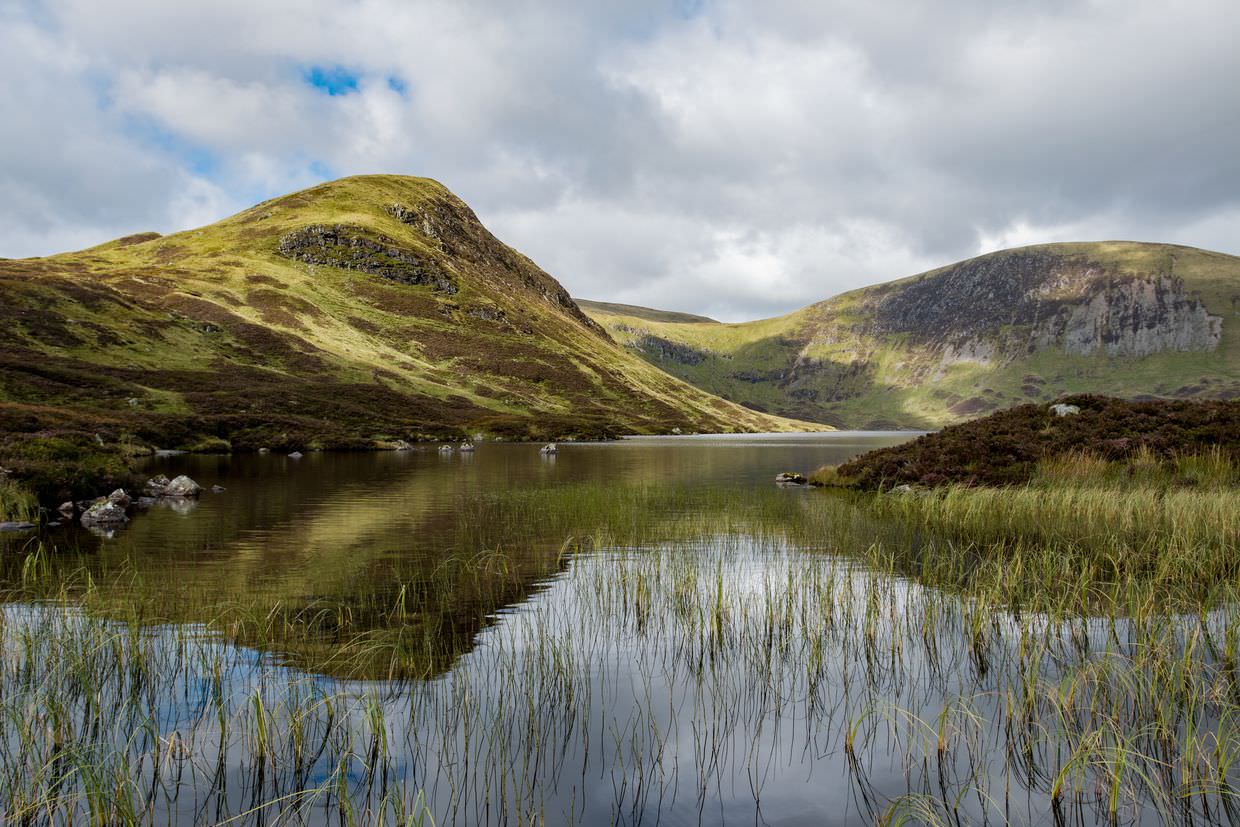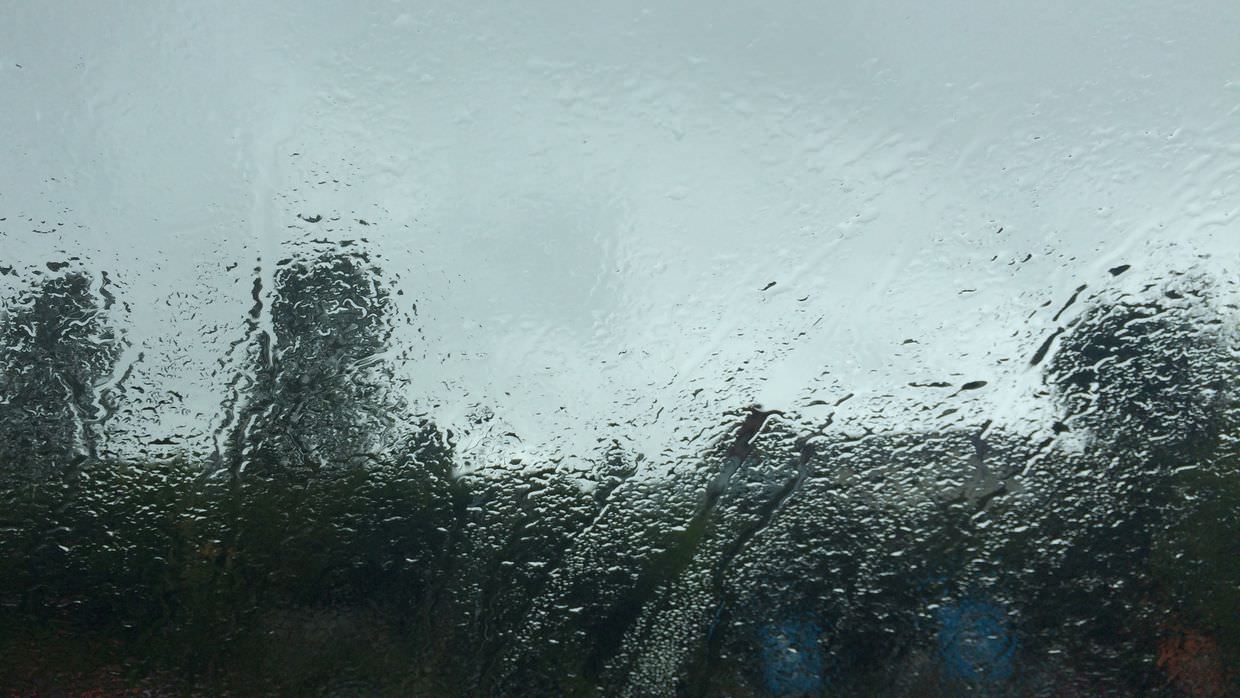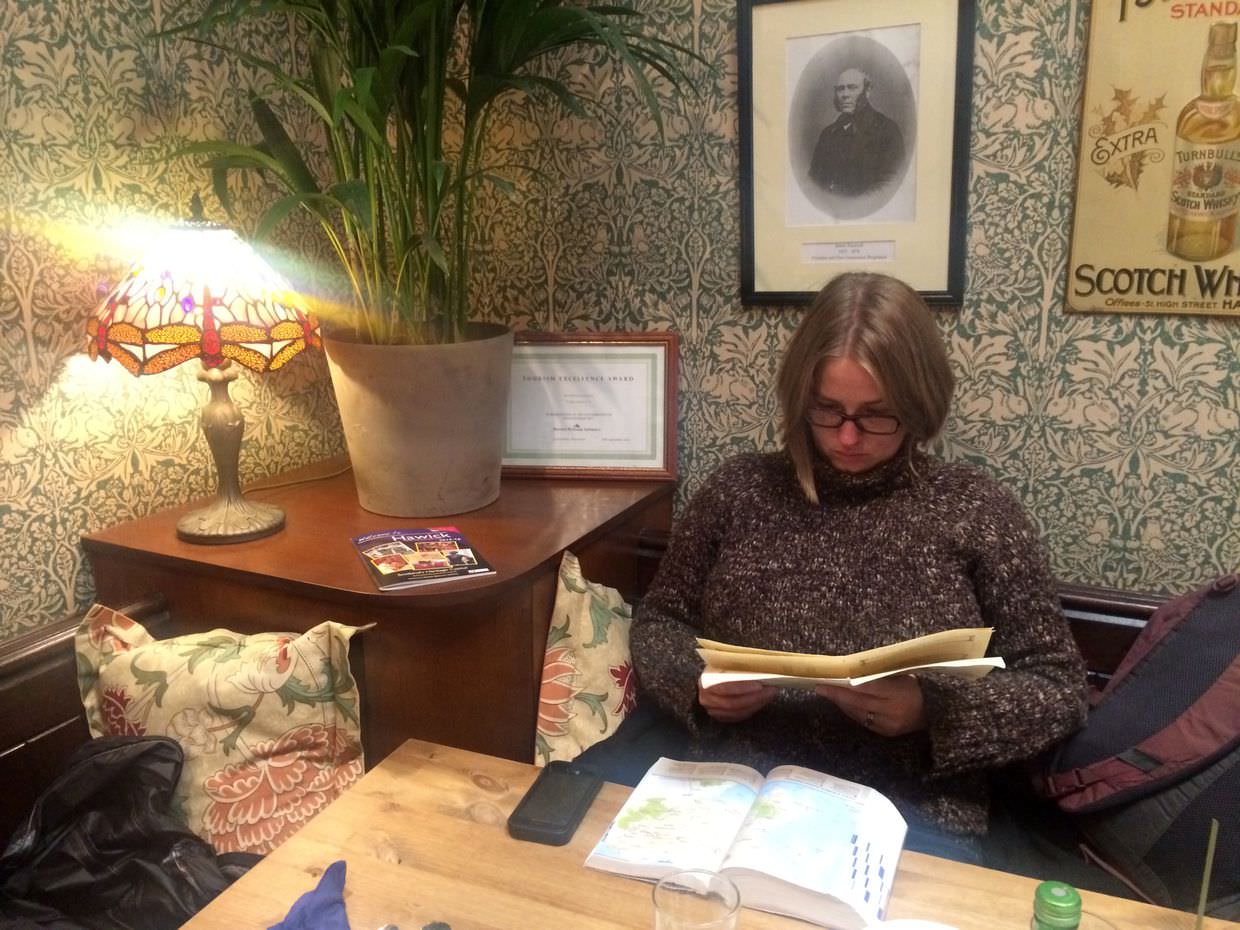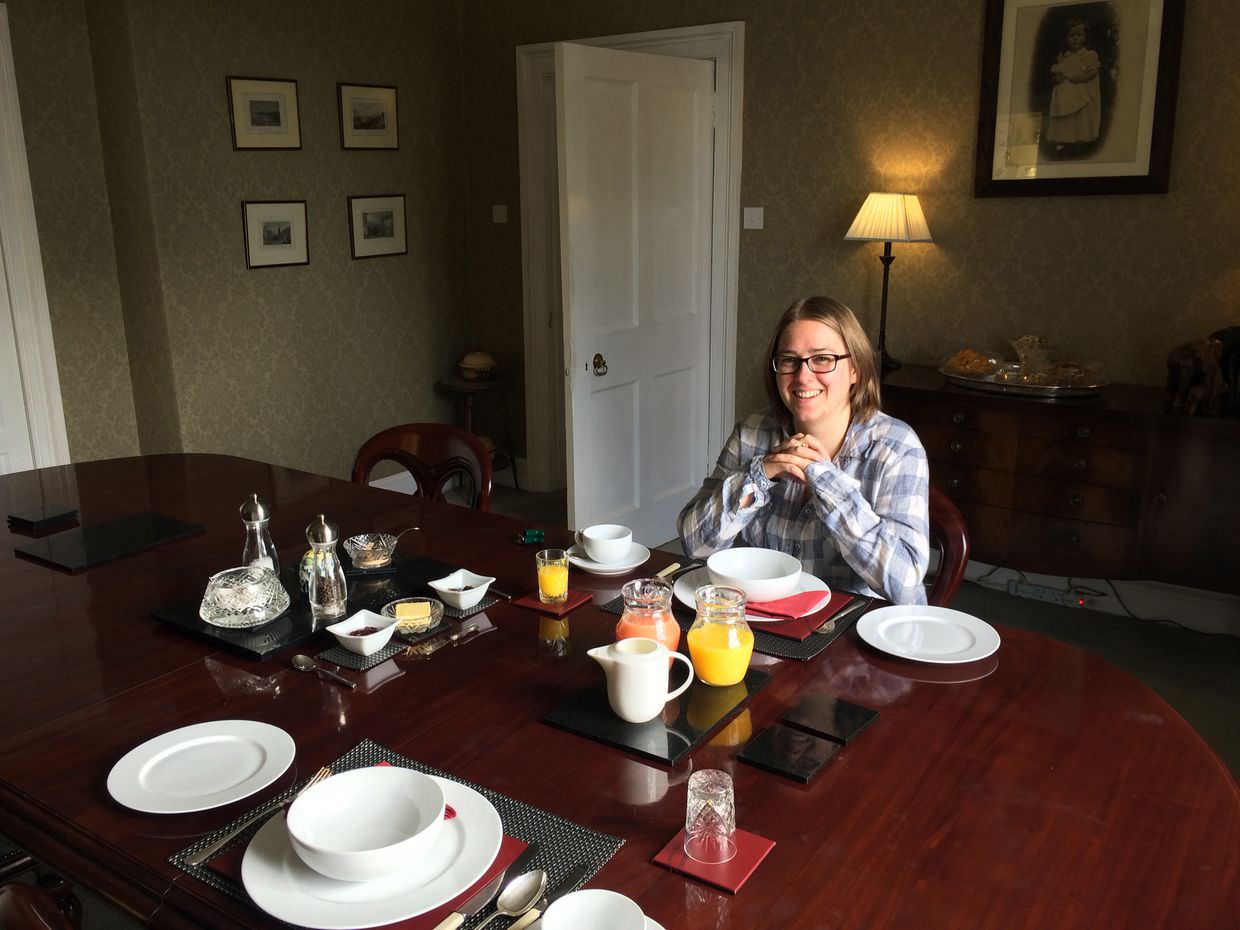Exploring Galloway and the Scottish Borders
We booked only three days of our two week trip to The North – one week of that we planned to spend in Scotland. After our astrophotography night at Kielder we’d be staying in Thornhill, then we’d travel onto Coursewall Lighthouse near to Stranraer. That route, from East to West across Scotland would hopefully reveal some places of interest, which we’d return to. The route from A to B wasn’t planned, and we mostly navigated by terrain; where the maps showed big valleys, lakes or hills – that’s where we’d drive. We avoided main roads and actively searched for things to photograph.

From Kielder to Hawick, to Moffat and Thornhill
Day 1 was a washout, the worst in all the two weeks. Being the first day, and with the forecast looking so poor we were apprehensive – would we get any decent photographs? Would this be an alright holiday? We’d also spent 6 hours driving yesterday, and then slept for only 4 hours – in hindsight two nights in Kielder would’ve been nice.
The weather conditions were so bad, the light so flat, the rain so heavy, that we didn’t take any pictures. In light of the bad weather we set off first towards Jedburgh; a town where we might visit a castle or some museums.

To Hawick
Alas, the road to Jedburgh was closed for resurfacing and the diversion was long and circuitous. It took us a long way in the opposite direction, almost as far as Newcastleton, then North, passing the small Hermitage Castle. We stopped for a look, but in the rain, and at £4.50 each to enter, we didn’t stay long. That route took us up to Hawick, which at least had mobile signal and free parking.

In Hawick, running under the cover of umbrella, we stopped at Turnbull’s for lunch. At the back of this chintzy, run-down caff, we waited for the rain to subside. Haggis and cheese panini and bad coffee.
Time drew on, and we needed to get to our B&B. We’d spent a couple of hours driving in the wrong direction. Jedburgh was out of the question. On the A7 we went to Selkirk and took the A708 through the hills towards Moffat.

A708, St Mary’s Loch, Grey Mare’s Tale
This single road was worth the detour. And it was a place we’d return to later in the week. Even in the dire conditions it was spectacular. From Selkirk we passed through Bowhill, Yarrowford and the Yarrow-hamlets, to the first loch of our journey; St Mary’s Loch.
We pulled-over and sat on the loch-side. Munching cheap chocolate fingers, we pondered how beautiful this place was; how quiet, tranquil and away from everything it seemed. This would be a theme; many of the most beautiful places in Southern Scotland were so quiet, and with very few tourists – and in stark contrast to The Lakes which we’d head to afterward.
Driving through gorgeous scenery is slow, at every interesting point you have to stop and take a look – survey the photography potential, look for nearby trails, but also relax and enjoy the moment (between the raindrops). (This led to a catchphrase, “pullover?” – “not a pullover” – “not a jumper”, which we ended up saying in that Fremulon “not a Doctor” way that will only be familiar to anyone who’s seen Brooklyn 99.)
From St Mary’s Loch the hills grow taller and begin to roll. Shortly you climb up, and then descend into a deep exhilarating valley. At the foot of this valley is the Grey Mare’s Tale, a tall waterfall and vertiginous hike to a remote loch. We weren’t going to attempt it in this weather, but we’d be back.
Dalveen Pass
From Moffat, up the A74(M) motorway to Elvanfoot, then due West on the A702. A bit of a long way around to get to Thornhill, but we wanted to see the Dalveen Pass. The pass is a road that cuts through the southern part of the rolling Lowther Hills, and is 350m at its highest.
Sadly for us the rain continued to fall, and this landmark was a little too far out of the way to visit again on our later travels.
Holmhill Country House
After all day in the car, driving in the rain, we were thankful to arrive in Thornhill with some lighter skies, and with a place to relax. Holmhill Country House is simply spectacular; an old country house, it’s been lovingly restored by our hosts Jill and Stewart into a sumptuous bed and breakfast that oozes with old world charm and modern style. It is our favourite of all the places we stayed.
Stewart, who we’d found halfway up a tree pruning some branches, showed us around. Through the front door we were taken to a sitting room with high ceilings, large antique sofas, a roaring fireplace, a pot of tea and some homemade shortbread. The windows look out over the garden, and beyond, to a stretching green vista that follows the River Nirth, out towards Penpont and the Southern Upland foothills.
The dining room, where we’d have breakfast, exudes the same grandeur of old; a beautiful dining table, another fireplace, old family photos, a clock that chimed as one once did in Samantha’s nan’s house. We felt like welcomed guests in a stately home. And the breakfast too – wow; not just the best breakfast we ate, but one of the best meals. Good coffee, and juices, of course. Samantha’s poached eggs on salmon were cooked to perfection; and my Scottish breakfast had the finest tasting haggis and black pudding I’ve come across (and we tried a lot!). Jill’s cooking is divine.

Our room met the same standard. An enormous king sized bed, ornate furnishings and a bathroom to simply enjoy; a large double walk-in shower and a free-standing bath. Exceptional. Along with the tea and coffee in our room, there was even complimentary sherry. In the end, when it was time to leave, we wished we could have stayed longer. One night simply wasn’t enough.
For dinner we ate at a place Stewart recommended. A 10 minute walk into town, to Buccleuch & Queensberry Hotel. The walls were adorned with paintings of highland cows.
Shattered from a long day of driving, and a night of astrophotography, we had an early night, and slept for a good 12 hours.